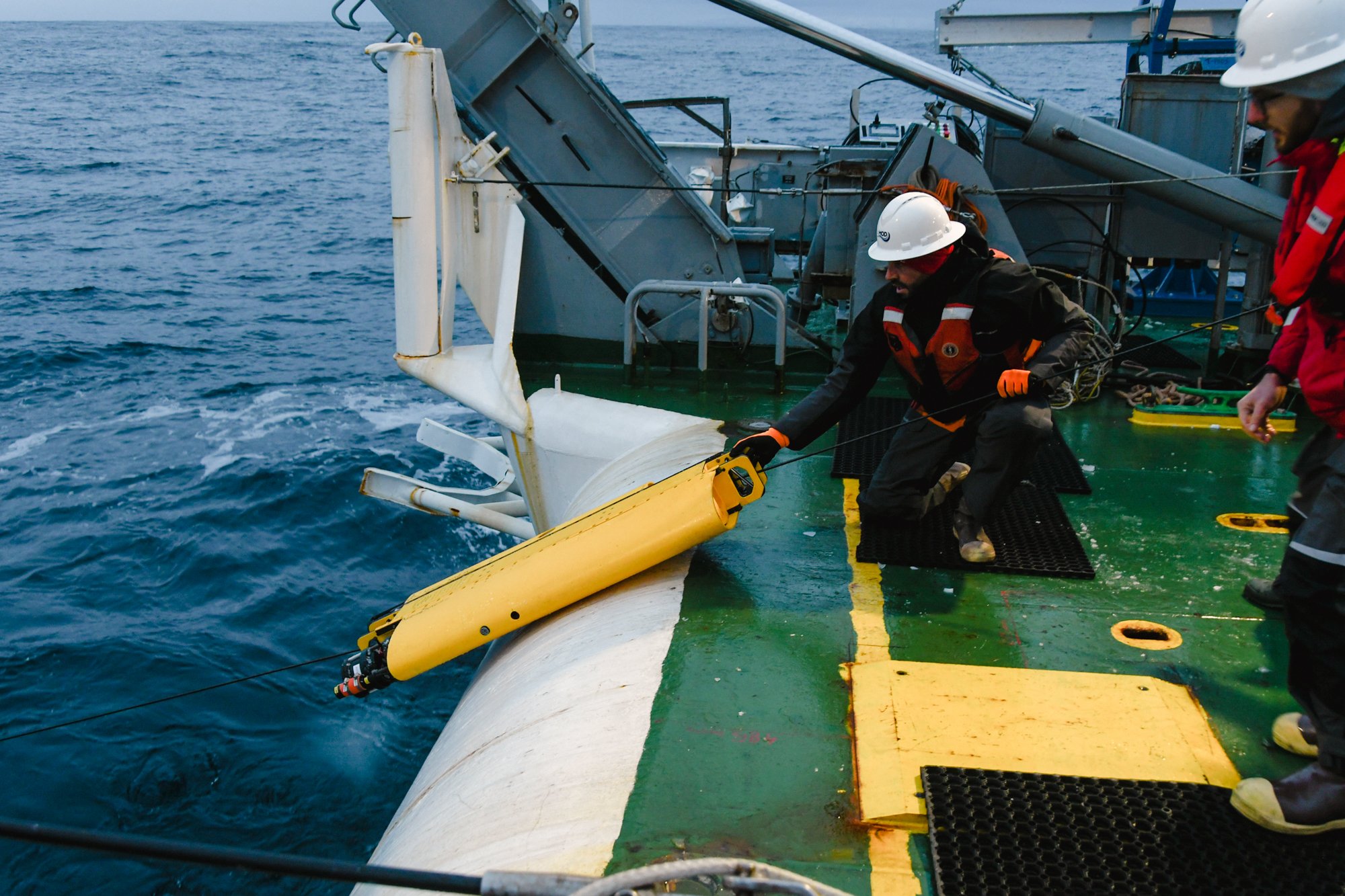NORSE - Northern Ocean Rapid Surface Evolution
MOD engineers getting ready to deploy our in-house fast-CTD.
The aim of NORSE is to investigate the physics of the rapid dynamical, thermodynamic and acoustical changes to the surface layer of the ocean which is subject to strong forcing from wind and waves, using a variety of oceanographic instruments.
The hope is that further understanding of these dynamic high latitude submesoscale processes, and the crucial role they play in watermass transformations and the overturning circulation, will improve our ability to predict and model the upper ocean, including things like sound propagation and transmission, as well as develop new autonomous sampling methodologies of the ice-free high latitudes.
fast-CTD ready to be deployed 2022
Drifter deployments in the Lofoten Basin 2021
Underway CTD profiling 2021
Wirewalker deployment 2022
During the field campaigns in 2021 and 2022 the science team used gliders, surface and sub-surface, floats, a bow-chain, an underway CTD, the SIO Fast CTD and new towed Phased Array Doppler Sonar, Wirewalkers and moorings to collect data on various temporal and spatial scales. The final NORSE cruise will be in November 2023, stay tuned for updates!
The project is a collaboration between Scripps scientists and researchers from Applied Research Laboratories at University of Texas, Virginia Institute of Marine Science (VIMS), Woods Hole Oceanographic Institution (WHOI), Applied Physics Lab (APL) at University of Washington, Center for Marine Research and Exploration (CMRE), Italy, and University of Bergen, Norway.
Read more on the NORSE DRI here.















